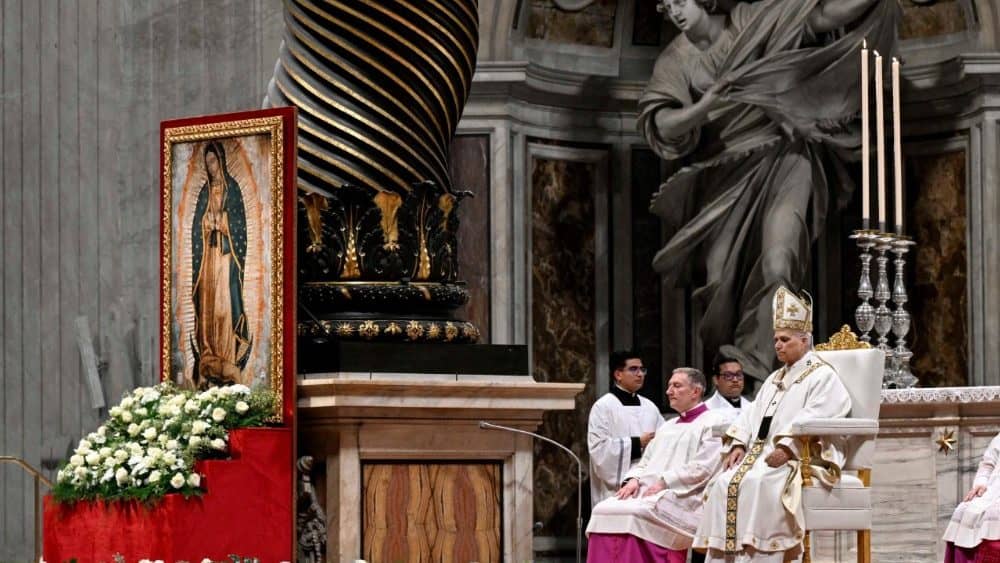The Vatican and the Holy Land might be the first two destinations that come to mind when you consider faith-based travel. Dig a little deeper, however, and you’ll find memorable pilgrimages to all corners of Europe — and even Ethiopia.
It’s hard not to gain inspiration from St. Paul, who traveled thousands of miles throughout Turkey spreading the Gospel on an often arduous and rambling route.
On the Greek isle of Patmos, you can still visit the cave where St. John was exiled in 95 AD and where he wrote the Book of Revelation.
The Tuscan town of Assisi, Italy, is home to two beloved saints, including St. Francis, founder of the Franciscans.
More than 100,000 travelers each year trek across the Pyrenees headed toward Santiago de Compostela, the final resting place of St. James.
Last but certainly not least are the magnificent rock churches of Lalibela, Ethiopia, carved out of a rock some 900 years ago.
Read more details about each site below, then check out a gallery of photos.
In the footsteps of St. Paul in Turkey
The apostle Paul traveled thousands of miles by land and sea on three missionary trips that span a decade, 47 AD to 57 AD. Born in the Roman city of Tarsus in current-day Turkey, he would travel along the coast of the Mediterranean Sea, stopping at the great cities of his time, a list that includes Ephesus, Iconium (Konya), Attaleia (Antalya), Smyrna (Izmir), and Troy (Truva).
In Ephesus, his teachings on Christ enraged silversmiths who were making a good living selling effigies of the Anatolian fertility goddess Artemis (Diana) to people visiting the massive marble Temple of Artemis. When Paul’s persuasive preaching led to a decrease in sales of Artemis figurines, the silversmiths brought charges against him. Court was held at the 25,000-seat Great Theater in Ephesus, and he was quickly exonerated.
The travels of St. Paul lends itself extremely well to an extensive tour of Turkey that includes many of the sightseeing highlights of the country. Orion Tour has been leading a 16-day jaunt called “In the Lonely Trail of St. Paul” since it opened its doors in 1969. You’ll visit Tarsus, best known today as the place where Cleopatra first met Mark Anthony. Then it’s on to Antioch, where the word “Christian” was first coined. A special treat is a day in Cappadocia, where the surreal, lunar-like landscape consists of cone-shaped monoliths and layers of soft volcanic rock called tufa. Early Christians found the pervious terrain ideal for escaping persecution. When wet, the tufa could be easily carved, like soap, to make caves out of the pinnacles, and industrious workers created vast underground cities descending hundreds of feet below the surface.
It’s hard not to feel like Julius Caesar when walking down the Marble Way at the well-preserved ruins of Ephesus. You’ll visit the three-tiered Great Theater and two other remarkable sites: the Temple of Hadrian and the Library of Celsus. All stand almost entirely intact from their heyday some 2,000 years ago. The itinerary also includes stops in Istanbul to see the stunning Blue Mosque and Topkapi Palace, the seat of government for the Ottoman Empire for many centuries, and the hot springs of Pamukkale, “cotton castle” in Turkish, named for the pearl-white cliffs that cover the mountainside like huge balls of cotton.
St. John’s Patmos
The Aegean Islands of Greece were a favorite place of exile during the Roman Empire. Thus became the fate of the apostle John, soon to be known as St. John the Divine or St. John the Theologian, banished to Patmos in 95 AD during the reign of Emperor Domitian. Those two years in exile became fruitful when John had a vision from God and wrote down what he saw in the Book of Revelation. Today, Patmos still has a feeling of solemnity and serenity, certainly not one of the Greek islands like Mykonos where one goes for raucous all-night partying.
Start your tour of the island at the Cave of Apocalypse, where St. John made his home on the island and where he would receive his vivid dreams, soon dictated to his disciple Prochoros. The cave is now enclosed within a sanctuary and convent. Before entering, be sure to pick up a brochure by a former cave overseer that describes the religious importance of each rock and icon in the dwelling. Towering over the island is the impressive Monastery of St. John, founded in the late 10th century. Walk inside the monastery and the adjacent Chapel of the Theotokos, lined with frescoes that date from the 12th century.
Leading up to the Monastery of St. John is the medieval town of Chorá, one of the few settlements in Greece that has remained relatively uninterrupted since the 12th century. Now a UNESCO World Heritage Site, the village is a memorable maze of narrow alleyways lined with whitewashed buildings and small eateries and shops. You’ll feel as if you entered a time warp that has changed little over the past 800 years. Afterwards, relax at one of the 11 rooms overlooking the water at Petra Hotel and Suites. To reach Patmos, fly through Athens to the island of Kos and then take a 2 ½-hour ferry with Blue Star Ferries.
The Franciscans of Assisi
Stroll the marble walkways of Assisi late at night, preferably not with the summer crowds, and you can’t help but run into Franciscan friars donning their robes and sandals. A life of simplicity and prayer, far from materialistic longings, still pervades this Tuscan hill town thanks to the teachings of Assisi’s favorite son, St. Francis. Pay homage to the revered man at one of the most cherished churches in Italy, the Basilica of St. Francis. Amble inside and you can’t help but be enamored by the 13th-century frescoes painted from floor to ceiling inside the building. They include works by the most acclaimed artists of the day, like Giotto’s magnificent Crucifixion, where small angels peer down at Christ’s body, only to express sadness and anguish. The paintings rise above a crypt that holds the human remains of Francis. Nearby is a decree by the Pope dated 1223 that gave his blessing to Francis’ ministry.
A devout follower of Francis’ ideals, even to the point of cutting her hair and wearing a sack, was St. Clare, who went on to start the order of the Poor Clares in Assisi. You can find her tomb at the nearby Basilica of St. Clare. Inside the church, you’ll also spot the same wooden crucifix Francis spotted in 1206 that would alter his life. Kneeling before the crucifix, the emaciated Francis heard a call to action to repair a church in the valley below Assisi, the Porziuncola Chapel.
Another important landmark in town is the medieval castle, Rocca Maggiore, circa 1367, perched atop a steep hilltop with its imposing yellow stone walls. Travelers tend to rush through Assisi in a day, but you’d be wise to adhere to the values of St. Francis and slow down to reflect. Better yet, choose to spend a night or two at one of the monasteries in town.
The rock churches of Lalibela, Ethiopia
Located in the northern highlands of Ethiopia, Lalibela is named after King Lalibela, who ruled the country in the latter part of the 12th century and early 13th century. His greatest legacy, however, are the 11 stone churches he had built as his recreation of Jerusalem. Constructed of red volcanic rock from the top down, these exquisite structures are no mere caves, but an incredible architectural accomplishment now protected as a UNESCO World Heritage Site. The churches are built in a variety of styles from a series of blocks, chiseled out to create walls, doors, roofs, and windows. The iconic Church of St. George was built in a shape of a cross. All are connected via series of drainage ditches, underground passages, and catacombs.
Adding to their poignancy today is that congregants of the Ethiopian Orthodox Church are still using these churches. More than 80,000 people make the pilgrimage each year to Lalibela, many who walk the 400 miles from the capital city of Addis Ababa. A far simpler solution is to book the 11-day “Ethiopian Odyssey” trip with reputable British outfitter, Cox & Kings. You’ll spend two days at Lalibela, stop at Axum, the reputed home of the Queen of Sheba and the Ark of the Covenant, and make a stop at the monastery of Debre Sina Mariam, where a vision of Mary was reportedly seen by shepherd girls, resulting in another important pilgrimage for Ethiopians.
The Way of St. James
If you’ve seen the 2010 movie, “The Way,” starring Martin Sheen, then you have a pretty good understanding of the legendary hiking route known as the Way of St. James or El Camino Santiago. Often taking up to a month of travel, the long traverse leads to the Spanish town of Santiago de Compostela, the final resting spot of St. James. The remains of the apostle James, a disciple of Jesus who was beheaded in Jerusalem, was first found in 813 AD. Ever since that time, the town has become the end point of a monumental pilgrimage.
The most popular route is the “French Way” or Camino Frances, which starts in the southern French town of Saint-Jean-Pied-De-Port, crosses the Pyrenees, and proceeds through northern Spain to the iconic cathedral that houses the crypt of St. James. There’s no need to carry a backpack or even food and water, since there are hostels, restaurants, even piped water during the entirety of the route, mostly set in a rural pastoral landscape. However, you will face steep ascents, unyielding sunshine in summer with no place for shade, and often walking on unforgiving paved trails near car traffic. Yet that pales in comparison to the new friendships you’ll form along the route, often with people from all over the globe. If you prefer to hike with an organized group, consider tackling a portion of the route with 206 Tours.
Once in Santiago de Compostela, you know you’ve reached the magnificent cathedral as soon as you’ve laid eyes on the sculpture on the doorway, Portico de la Gloria, showing Christ surrounded by his apostles. Created in 1188 by an anonymous sculptor known as the Master Mateo, it is considered one of the country’s foremost works of art. Inside, the opulent baroque-style altar is a worthy welcome mat to your achievement. Underneath the altar is the silver urn that contains the remains of St. James. Wait in line to give the statue of St. James a big hug, a longstanding tradition.
Newton-based Steve Jermanok is co-owner of a boutique travel agency, ActiveTravels.com.
















